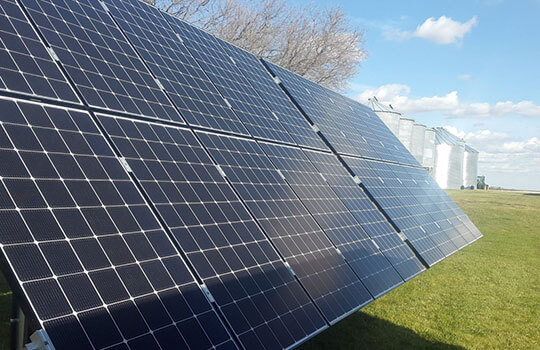 By 2012 our team experienced installation of all types of solar foundations, including concrete piles, helical piles, cast-in-place concrete, pole mounts anchored to concrete, building concrete forms, ballasted systems. At some point, we learned the job of a concrete contractor so well, that I am sure we could be successful non-renewable industries as well. Neither of the above options provided us with a level of the satisfaction with respect to the cost, speed of the installation and the environmental footprint.Our search fell on driven piles. At the very first pile-driven project we fell in love with the speed, efficiency and the huge future potential we can achieve with this technology.Typically the cost of outsoursing geotechnical analysis is prohibitive for implementation of pile-driven technology on small-scale installations. In Canada, frost-heave, rocky soils and load-carrying capacity of the soil are the major factors affecting foundation designs. Without detailed and site specific soil testing, it’s too risky to implement pile-driving solar foundations.Since 2012 our team built a necessary set of tools to complete geotechnical analysis in-house: borehole sampling, vertical and horizontal load testing and soil resistivity tests. We partnered with local engineers to conduct and interpret the soil lab tests, evaluate frost-heave risk and complete the optimal foundation design.By keeping all this work in-house, we are able to lower the KW installation threshold for solar contractors. At the current, 2017-year economic conditions, systems sized at 30KW and higher pile-driving technology generally is the most cost-effective solution assuming good soil conditions.
By 2012 our team experienced installation of all types of solar foundations, including concrete piles, helical piles, cast-in-place concrete, pole mounts anchored to concrete, building concrete forms, ballasted systems. At some point, we learned the job of a concrete contractor so well, that I am sure we could be successful non-renewable industries as well. Neither of the above options provided us with a level of the satisfaction with respect to the cost, speed of the installation and the environmental footprint.Our search fell on driven piles. At the very first pile-driven project we fell in love with the speed, efficiency and the huge future potential we can achieve with this technology.Typically the cost of outsoursing geotechnical analysis is prohibitive for implementation of pile-driven technology on small-scale installations. In Canada, frost-heave, rocky soils and load-carrying capacity of the soil are the major factors affecting foundation designs. Without detailed and site specific soil testing, it’s too risky to implement pile-driving solar foundations.Since 2012 our team built a necessary set of tools to complete geotechnical analysis in-house: borehole sampling, vertical and horizontal load testing and soil resistivity tests. We partnered with local engineers to conduct and interpret the soil lab tests, evaluate frost-heave risk and complete the optimal foundation design.By keeping all this work in-house, we are able to lower the KW installation threshold for solar contractors. At the current, 2017-year economic conditions, systems sized at 30KW and higher pile-driving technology generally is the most cost-effective solution assuming good soil conditions.Does driven piles pay-off on small-scale commercial installs?
December 25, 2016